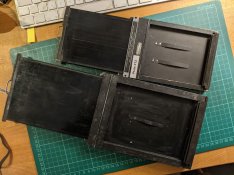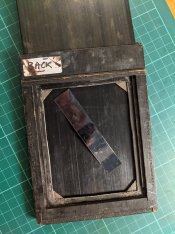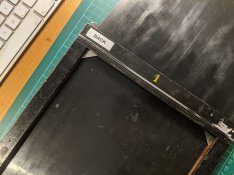Donald Qualls
Subscriber
I've seen a number of videos recently, in which tintype (wet plate collodion) was demonstrated, from cleaning the working surface of the plate, to pouring, sensitizing, mounting in the holder, exposing, then developing, fixing, and washing.
Clearly, there's a level of physical skill involved in being able to pour the plate well and quickly, handle it efficiently, etc. as well as a body of knowledge in terms of having the right dilution with the right solvents for the collodion, the right salts in the collodion, the right sensitizer strength, the right developer and fixer, etc. I've seen some of the results from people learning the process, too -- frilling, lifting, fingerprints, unevenness, and so forth.
Sure, I'd need to take a portable darkroom with me if I go into the mountains with wet plate -- but it's remarkable what a modified bicycle will carry and on how primitive a path (look at old photos of the Ho Chi Minh trail bicycles), and I've seen some pretty compact and seemingly lightweight wet plate setups (I've read that wet plate was actually done in balloon baskets in the 1860s).
My question is, roughly how long (months, and exposures) does it take to develop the level of skill where you can depend on your process to make images, rather than just learn the process? Is it years, and hundreds of plates, or is it closer to weeks and dozens? It surely seems this would be within reach if the latter, and almost certain to make ULF less costly than it is with factory-coated film.
Clearly, there's a level of physical skill involved in being able to pour the plate well and quickly, handle it efficiently, etc. as well as a body of knowledge in terms of having the right dilution with the right solvents for the collodion, the right salts in the collodion, the right sensitizer strength, the right developer and fixer, etc. I've seen some of the results from people learning the process, too -- frilling, lifting, fingerprints, unevenness, and so forth.
Sure, I'd need to take a portable darkroom with me if I go into the mountains with wet plate -- but it's remarkable what a modified bicycle will carry and on how primitive a path (look at old photos of the Ho Chi Minh trail bicycles), and I've seen some pretty compact and seemingly lightweight wet plate setups (I've read that wet plate was actually done in balloon baskets in the 1860s).
My question is, roughly how long (months, and exposures) does it take to develop the level of skill where you can depend on your process to make images, rather than just learn the process? Is it years, and hundreds of plates, or is it closer to weeks and dozens? It surely seems this would be within reach if the latter, and almost certain to make ULF less costly than it is with factory-coated film.








